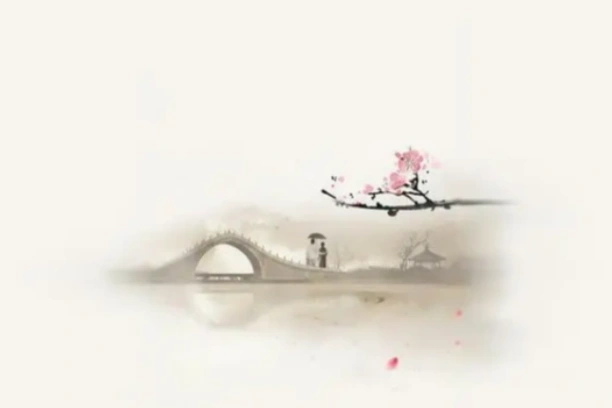
The door of Ch’an is entered by Wu. When we meditate on Wu we ask “What is Wu?” On entering Wu, we experience emptiness; we are not aware of existence, either ours or the world’s.
E-MAIL: admin@relaxmid.com

When pre-Ch’an masters practiced, they mostly used the methods given in the translated Hinayana sutras. For them, tso-ch’an referred to methods of sitting to attain samadhi. But among the later masters of Ch’an, the term was reserved for methods of attaining enlightenment without samadhi as an intermediate or final stage.
The First Patriarch of Ch’an, the Indian monk Bodhidharma 菩提達摩, arrived in China around 520 A.D., and established himself in the Shao Lin Temple 少 林寺. There he wrote the treatise, Erh ju ssu hsing 二入 四行, The Two Entries and the Four Practices. One of the entries was the Entry Through Principle 理入. This was in fact direct penetration to the experience of Buddhanature. According to legend, Bodhidharma sat facing the wall in the temple for nine years. The posture he used was the same as those used by previous masters to attain samadhi. He sat with crossed legs and concentrated mind. However, the goal was different; it was to develop wisdom without going through samadhi. He did not use the Hinayana methods such as visualizing the parts of one’s body. Bodhidharma’s approach was based on the Lankavatara Sutra which advised “taking no door as the Dharma door” and “not using any language, words or symbols as the foundation.”
While the historical facts of Bodhidharma’s life are scant, there is no doubt that he practiced tso-ch’an. There is also little doubt that he was enlightened before going to China. Even so, when he settled in the Shao-Lin Temple, he continued tso-ch’an practice. His great contribution to Ch’an was his insistence on directly experiencing Buddha-nature through tso-ch’an.
The Fourth Patriarch Tao-hsin 道信(580-651) wrote Ju-tao anhsin yao fang-pien men 入道安心要方便 門, The Methods for Entering the Path and Calming the Mind. In it, he quoted from the Lankavatara Sutra and the Wen-shu shuo po-jo ching 文殊說般若經, The Prajna Sutra Spoken by Manjusri. He stresses the importance of tso-ch’an for the beginner, with emphasis on the right posture. The neophyte must then contemplate the five skandhas ─ the material skandha of form (the elements), and the four mental skandhas: feeling, perception, phenomena, and consciousness. The Manjusri Sutra says, “He should contemplate the five skandhas as originally empty and quiescent, non-arising, non-perishing, equal, without differentiation. Constantly thus practicing, day or night, whether sitting, walking, standing or lying down, finally one reaches an inconceivable state without any obstruction or form. This is the Samadhi of One Act (I-hsing san-mei)一行三昧.”
In a sense, the Fourth Patriarch is describing the two meanings of tso-ch’an in Ch’an. In the beginning the practitioner starts by taking the sitting posture. He will use simple and basic methods of regulating the body and mind. At an advanced stage, he will not be limited to sitting, but in any posture, his mind will be in accord with the Samadhi of One Act.
His disciple, the Fifth Patriarch Hung-jen 弘忍(602 -675), wrote an essay, Hsiu-hsing Yao Lun, 修行要論, The Essentials of Cultivation, which emphasizes sitting. He quoted from the I-chiao ching 遺教經, The Sutra of the Buddha’s Last Bequest, which says “When the mind is placed at one point, there is nothing that cannot be attained.” The one-pointedness of mind to which he referred was not samadhi, but one’s original or true mind. He also said that correct posture is critical. Beginners should, for example, follow the Kuan wu-liang shou fo ching 觀無量壽佛經, Sutra of Contemplation on the Buddha of Unlimited Life, which says that one should sit upright with correct thoughts, closing one’s eyes and mouth, and sit day and night. From many sources we can see that the Fifth Patriarch did sit a lot. The Biographies of Eminent Monks 高僧傳 describe the Fifth Patriarch foregoing sleep to sit all night. In the same book, Shen-hsiu 神秀(active 671-706), a disciple of Hung-jen 弘忍 and founder of the Northern Branch of the Ch’an School, is described as taking tso-ch’an as his main job.
Hui-neng 惠能(638-713), who succeeded Hung-jen as the Sixth Patriarch, was not an advocate as sitting as the path to enlightenment. With him, we have a distinction between tso-ch’an which attains enlightenment through sitting, and tso-ch’an which attains enlightenment without sitting. Hui-neng had a different interpretation of what tso-ch’an means. He said that when there is no mind, or no thoughts arising, that is called “sitting” (tso). When you see internally that the self-nature is not moving, that is Ch’an.
This was different from the sitting tso-ch’an of Bodhidharma. The Sixth Patriarch took his inspiration from the Samadhi of One Act, described in the Manjusri Sutra mentioned above. The method is to put your mind steadfastly on the One Dharma Realm 一法界, in which there is no differentiation into forms. Quoting from the Vimalakirti Sutra 維摩詰經, he also said, “The straightforward mind is the Path.” Its meaning is that all forms are equivalent to one form. Any time, any place, whether walking, standing, sitting or lying down, there is no situation that is not an opportunity to practice tso-ch’an. In this view sitting was not only not necessary, but could be a hindrance.
PREVIOUS: Roots of Tso-ch’an in India | TSO-CH’AN
NEXT: Fundamentals of Tso-ch’an | TSO-CH’AN
